Downscaling the ocean response to the Madden-Julian Oscillation in the Northwest Atlantic and adjacent shelf seas
- PMID: 39534443
- PMCID: PMC11554746
- DOI: 10.1007/s00382-024-07233-y
Downscaling the ocean response to the Madden-Julian Oscillation in the Northwest Atlantic and adjacent shelf seas
Abstract
Subseasonal-to-seasonal (S2S) prediction is a global effort to forecast the state of the atmosphere and ocean with lead times between two weeks and a season. This study explores the feasibility of S2S prediction of the ocean using a variety of tools including statistical analysis, a statistical-dynamical mixed layer model, and a regional, high-resolution ocean circulation model based on physical principles. Ocean predictability on S2S timescales is analyzed by compositing winter sea surface temperature (SST) anomalies in the North Atlantic with respect to the state of the Madden-Julian Oscillation (MJO). It is found that statistically significant, large-scale SST changes, particularly along the eastern seaboard of North America, can be related to the MJO. This signal is shown to be driven by anomalous air-sea heat fluxes caused by atmospheric perturbations in response to the MJO. The high-resolution model of the Gulf of Maine and Scotian Shelf is used to downscale the mean ocean response to the MJO. The model is able to capture the observed relationship between the MJO and SST in the northwest Atlantic. It is also shown that the anomalous atmospheric circulation in response to the MJO leads to anomalous upwelling on the Scotian Shelf. Overall, this study demonstrates that it is feasible, and of value, to use regional ocean models for S2S prediction.
Keywords: Dynamical downscaling; Madden–Julian oscillation; Subseasonal-to-seasonal prediction; Teleconnections.
© The Author(s) 2024.
Conflict of interest statement
Conflict of interestThe authors have no relevant financial or non-financial interests to disclose.
Figures

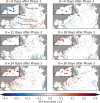
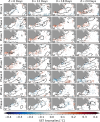


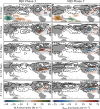

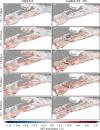
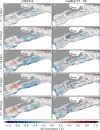
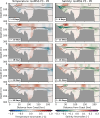
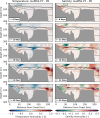
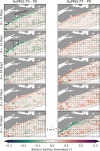
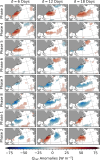
Similar articles
-
Insignificant QBO-MJO Prediction Skill Relationship in the SubX and S2S Subseasonal Reforecasts.J Geophys Res Atmos. 2019 Dec 16;124(23):12655-12666. doi: 10.1029/2019JD031416. Epub 2019 Dec 5. J Geophys Res Atmos. 2019. PMID: 32025452 Free PMC article.
-
Madden-Julian Oscillation influence on sub-seasonal rainfall variability on the west of South America.Clim Dyn. 2020 Feb;54(3-4):2167-2185. doi: 10.1007/s00382-019-05107-2. Epub 2020 Jan 24. Clim Dyn. 2020. PMID: 33456207 Free PMC article.
-
Impact of the Madden-Julian oscillation on Antarctic sea ice and its dynamical mechanism.Sci Rep. 2019 Jul 24;9(1):10761. doi: 10.1038/s41598-019-47150-3. Sci Rep. 2019. PMID: 31341253 Free PMC article.
-
Four Theories of the Madden-Julian Oscillation.Rev Geophys. 2020 Sep;58(3):e2019RG000685. doi: 10.1029/2019RG000685. Rev Geophys. 2020. PMID: 32879923 Free PMC article. Review.
-
Sea surface temperature variability: patterns and mechanisms.Ann Rev Mar Sci. 2010;2:115-43. doi: 10.1146/annurev-marine-120408-151453. Ann Rev Mar Sci. 2010. PMID: 21141660 Review.
References
-
- Adames ÁF, Wallace JM, Monteiro JM (2016) Seasonality of the structure and propagation characteristics of the MJO. J Atmos Sci 73(9):3511–3526. 10.1175/JAS-D-15-0232.1
-
- Amaya DJ, Jacox MG, Dias J, Alexander MA, Karnauskas KB, Scott JD, Gehne M (2022) Subseasonal-to-seasonal forecast skill in the California current system and its connection to coastal Kelvin waves. J Geophys Res Oceans 127(1):e2021JC017892. 10.1029/2021JC017892
-
- Baxter S, Weaver S, Gottschalck J, Xue Y (2014) Pentad evolution of wintertime impacts of the Madden–Julian Oscillation over the contiguous United States. J Clim 27(19):7356–7367. 10.1175/JCLI-D-14-00105.1
-
- Buckley MW, Ponte RM, Forget G, Heimbach P (2014) Low-frequency SST and upper-Ocean heat content variability in the North Atlantic. J Clim 27(13):4996–5018. 10.1175/JCLI-D-13-00316.1
-
- Burdett HL, Wright H, Smale DA (2019) Photophysiological responses of canopy-forming kelp species to short-term acute warming. Front Mar Sci. 10.3389/fmars.2019.00516
LinkOut - more resources
Full Text Sources
